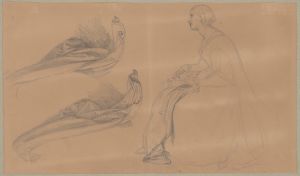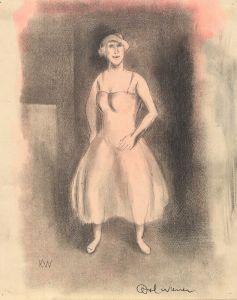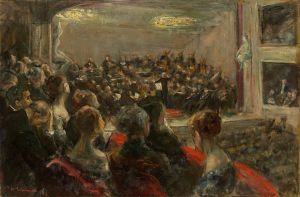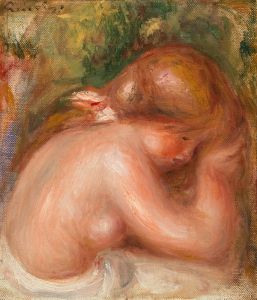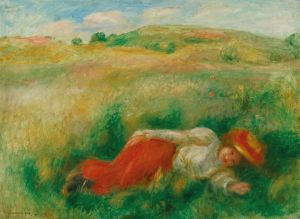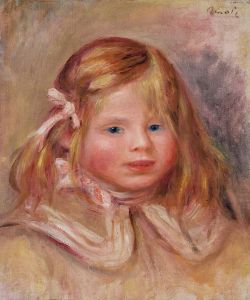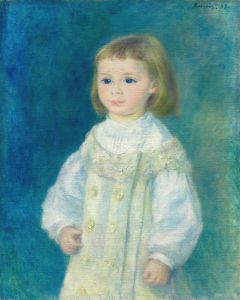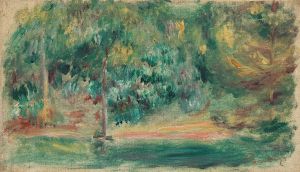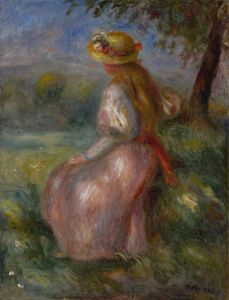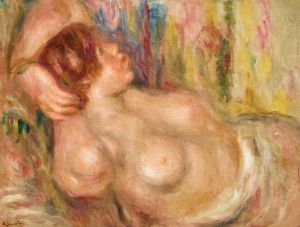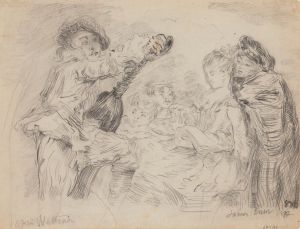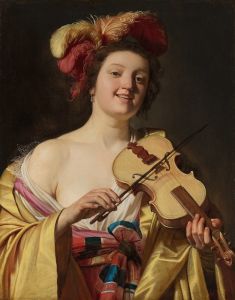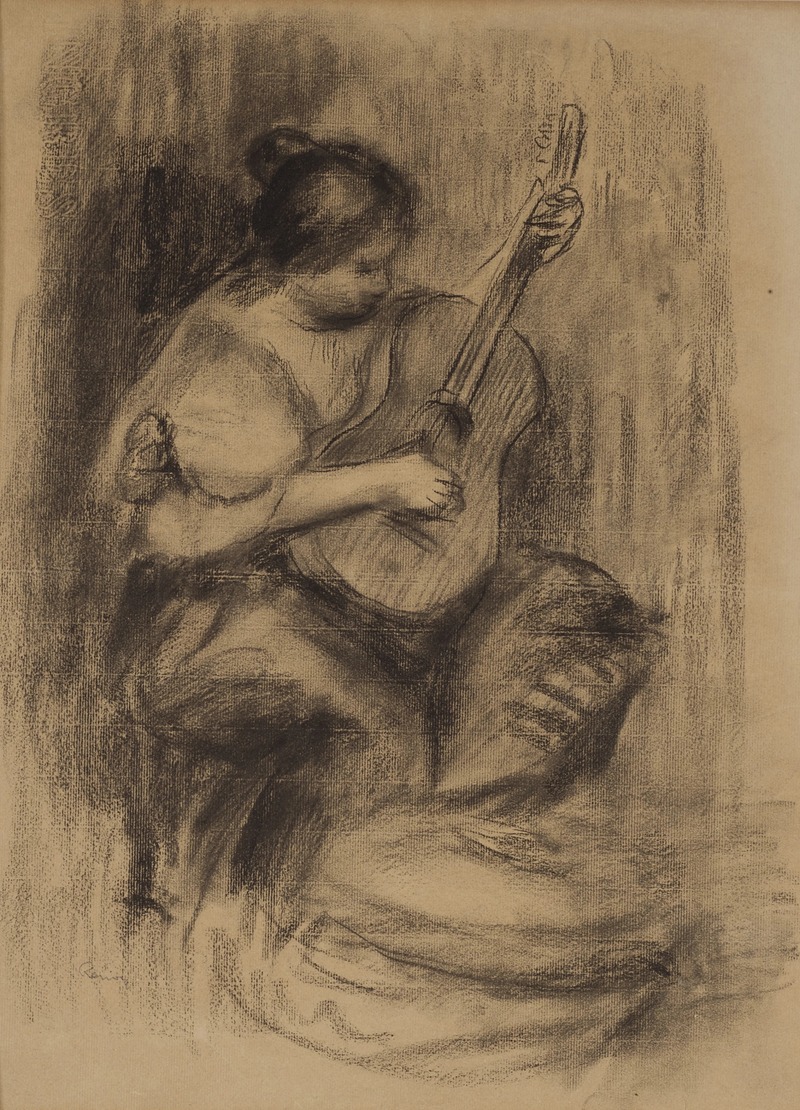
Joueuse de guitar
A hand-painted replica of Pierre-Auguste Renoir’s masterpiece Joueuse de guitar, meticulously crafted by professional artists to capture the true essence of the original. Each piece is created with museum-quality canvas and rare mineral pigments, carefully painted by experienced artists with delicate brushstrokes and rich, layered colors to perfectly recreate the texture of the original artwork. Unlike machine-printed reproductions, this hand-painted version brings the painting to life, infused with the artist’s emotions and skill in every stroke. Whether for personal collection or home decoration, it instantly elevates the artistic atmosphere of any space.
Pierre-Auguste Renoir, a prominent French artist and a leading figure in the Impressionist movement, created the painting "Joueuse de guitare" (Guitar Player) in 1897. This artwork is a testament to Renoir's evolving style during the latter part of his career, where he began to incorporate more classical influences into his work, moving away from the pure Impressionist techniques that characterized his earlier paintings.
"Joueuse de guitare" depicts a young woman playing a guitar, a subject that reflects Renoir's interest in capturing moments of everyday life and leisure. The painting is notable for its vibrant use of color and the soft, fluid brushstrokes that are characteristic of Renoir's style. The woman's serene expression and the gentle handling of light and shadow demonstrate Renoir's skill in portraying human emotion and the subtleties of light.
Renoir's choice of subject matter in "Joueuse de guitare" aligns with his frequent depiction of women in relaxed, intimate settings. This focus on femininity and domesticity is a recurring theme in his work, highlighting his appreciation for beauty and grace. The painting's composition, with the figure placed prominently in the foreground, draws the viewer's attention to the musician and her instrument, creating a sense of immediacy and presence.
During the period when "Joueuse de guitare" was painted, Renoir was increasingly influenced by the classical traditions of the past. This influence is evident in the painting's balanced composition and the careful attention to detail in the rendering of the figure and her surroundings. Renoir's admiration for the works of earlier masters such as Raphael and Titian can be seen in the harmonious arrangement and the delicate modeling of forms.
The painting is housed in the Musée de l'Orangerie in Paris, which is home to an extensive collection of Impressionist and Post-Impressionist works. The museum provides an ideal setting for appreciating Renoir's contributions to the art world, as it allows visitors to explore the broader context of the Impressionist movement and its impact on subsequent generations of artists.
Renoir's "Joueuse de guitare" is a significant work that exemplifies the artist's transition from Impressionism to a more refined, classical style. It reflects his ongoing exploration of light, color, and form, as well as his enduring fascination with the human figure. The painting remains an important part of Renoir's oeuvre, offering insight into his artistic development and the broader trends in late 19th-century art.
In summary, "Joueuse de guitare" is a notable example of Pierre-Auguste Renoir's mature style, showcasing his ability to blend Impressionist techniques with classical influences. The painting captures a moment of quiet beauty and introspection, highlighting Renoir's mastery of color, composition, and the depiction of human emotion.





